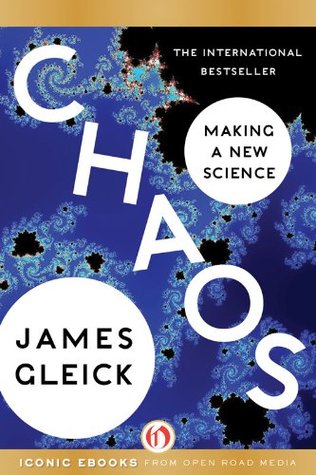More on this book
Community
Kindle Notes & Highlights
Chaos breaks across the lines that separate scientific disciplines. Because it is a science of the global nature of systems, it has brought together thinkers from fields that had been widely separated. “Fifteen years ago, science was heading for a crisis of increasing specialization,” a Navy official in charge of scientific financing remarked to an audience of mathematicians, biologists, physicists, and medical doctors. “Dramatically, that specialization has reversed because of chaos.”
He deflated the view of science as an orderly process of asking questions and finding their answers. He emphasized a contrast between the bulk of what scientists do, working on legitimate, well-understood problems within their disciplines, and the exceptional, unorthodox work that creates revolutions.
These scientists could speak almost as easily to laymen as to each other, because they had not yet reached a stage where they could take for granted a common, specialized language for the phenomena they were studying. By contrast, a twentieth-century fluid dynamicist could hardly expect to advance knowledge in his field without first adopting a body of terminology and mathematical technique. In return, unconsciously, he would give up much freedom to question the foundations of his science.
Central to Kuhn’s ideas is the vision of normal science as solving problems, the kinds of problems that students learn the first time they open their textbooks. Such problems define an accepted style of achievement that carries most scientists through graduate school, through their thesis work, and through the writing of journal articles that makes up the body of academic careers. “Under normal conditions the research scientist is not an innovator but a solver of puzzles, and the puzzles upon which he concentrates are just those which he believes can be both stated and solved within the
...more
Shallow ideas can be assimilated; ideas that require people to reorganize their picture of the world provoke hostility.
The result of a mathematical development should be continuously checked against one’s own intuition about what constitutes reasonable biological behavior. When such a check reveals disagreement, then the following possibilities must be considered: A mistake has been made in the formal mathematical development; The starting assumptions are incorrect and/or constitute a too drastic oversimplification; One’s own intuition about the biological field is inadequately developed; A penetrating new principle has been discovered. —HARVEY J. GOLD, Mathematical Modeling of Biological Systems
Mandelbrot appended this statement to his entry in Who’s Who: “Science would be ruined if (like sports) it were to put competition above everything else, and if it were to clarify the rules of competition by withdrawing entirely into narrowly defined specialties. The rare scholars who are nomads-by–choice are essential to the intellectual welfare of the settled disciplines.”
Granted, every result must eventually be made rigorous by the standard methods of proof, or it would not be mathematics. To see an image on a graphics screen does not guarantee its existence in the language of theorem and proof. But the very availability of that image was enough to change the evolution of mathematics. Computer exploration was giving mathematicians the freedom to take a more natural path, Peitgen believed. Temporarily, for the moment, a mathematician could suspend the requirement of rigorous proof. He could go wherever experiments might lead him, just as a physicist could. The
...more


